Chamonix Mont-Blanc, land of crystals
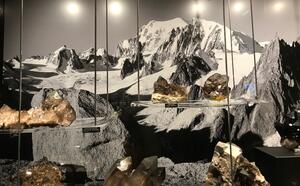
A new museum for a 25 million year old treasure
Following the acquisition of two exceptional collections, the Town Hall of Chamonix-Mont-Blanc and the Community of Communes of the Chamonix Valley took the decision to expand the existing Crystal museum in order to create a mineralogy museum of national standing. On December 19, 2021, the Crystal Museum reopened its doors after two years of major renovations.
The exhibition rooms occupy a space of 700 m² with no less than 1,800 remarkable pieces. Whether you are a collector or a novice, adult or child, the sense of wonder is absolute! Be ready for a dazzling immersion in the treasures of our terrestrial world.
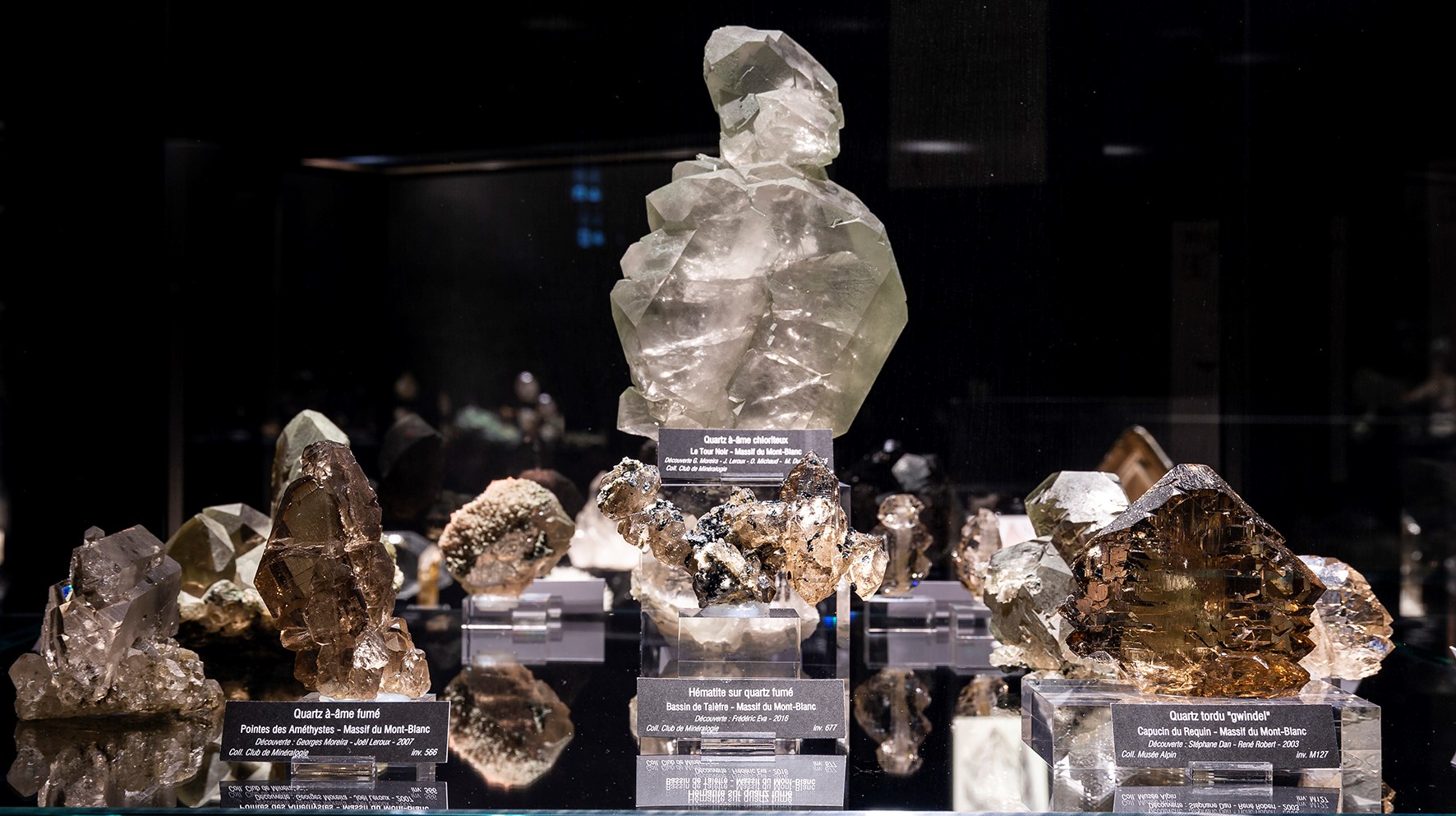
The journey begins along the Alpine chain, with unique pieces from the French, Italian, Swiss and Austrian massifs, and in particular from the Mont-Blanc mountain range. The exhibition showcases some of the finest international collections of rose-red fluorites, smoky quartz, axinites, siderites, epidotes…
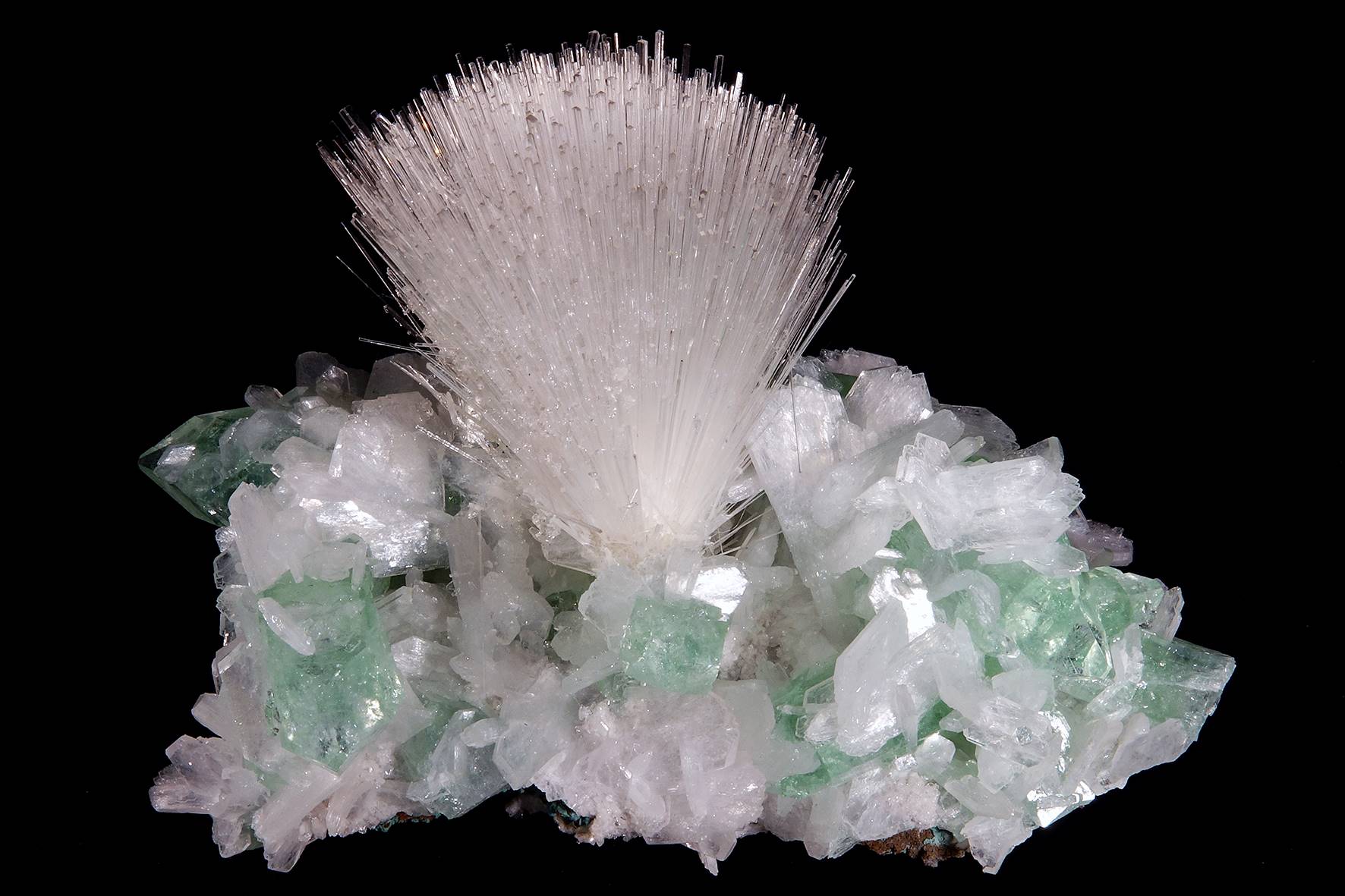
The tour continues around the world, beginning with French mines and quarries, showcasing the most emblematic pieces of all five continents: azurites from Chessy-les-Mines, aquamarines from Pakistan, Peruvian pyrites, Congolese dioptases and Australian opals.
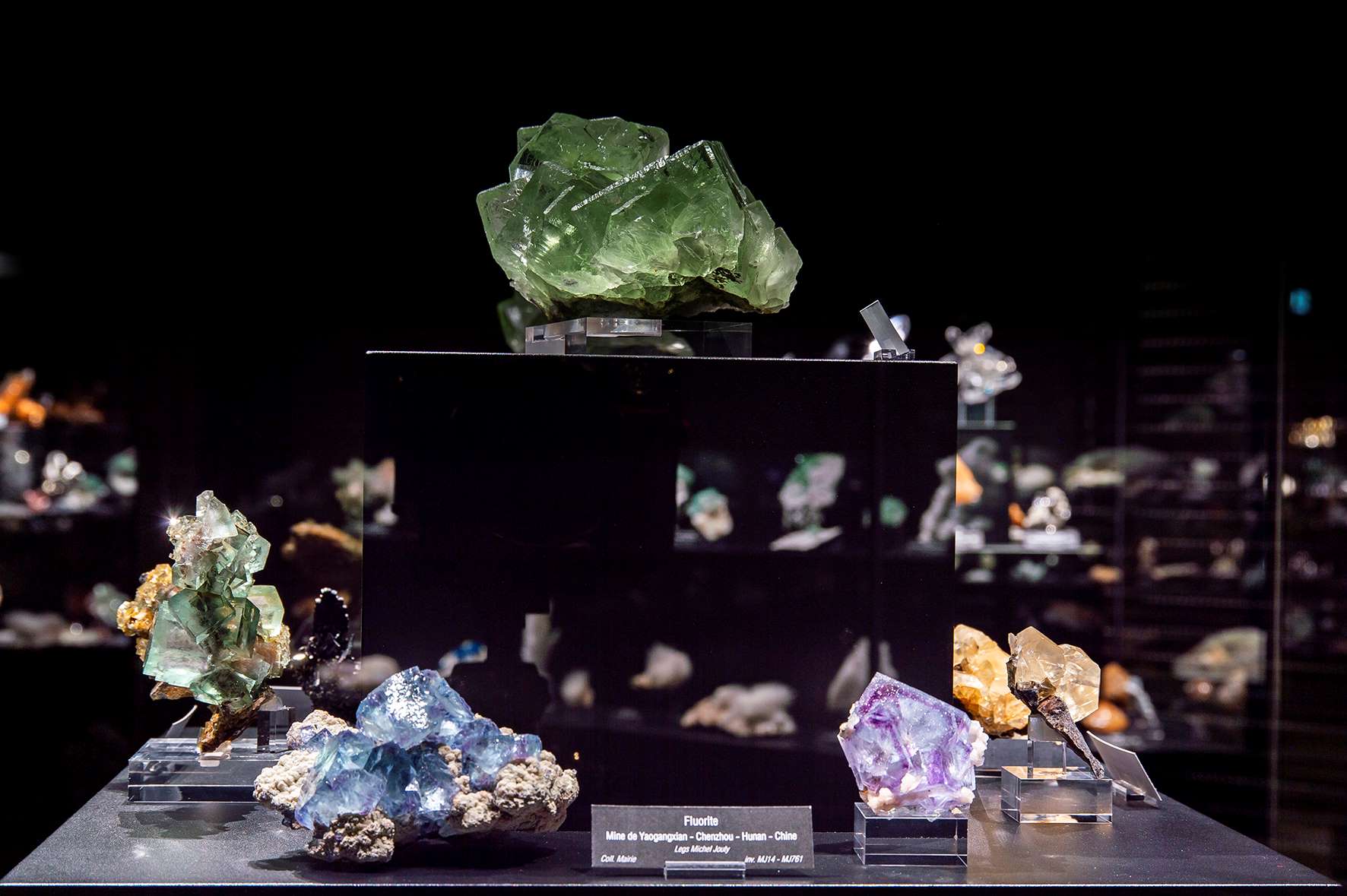
A circular room, called "the Treasure" allows visitors to discover gold, silver, copper, sapphires, rubies, emeralds, topazes, aquamarines, garnets ... Noble metals, precious stones and semi-precious stones, both raw and cut, offer the most fascinating spectacle.
Rock crystals, at the heart of Chamonix's history
If mineralogy is a passion that is practiced throughout France, Mont-Blanc is an area of choice for the quantity and quality of the crystals found here. Fluorite, bright pink or red in color or twisted quartz (gwindel for the Anglo-Saxon term) which takes the form of a comb, are the most sought after in the massif, the only area in the world, alongside the Polar Urals, where they can be found.
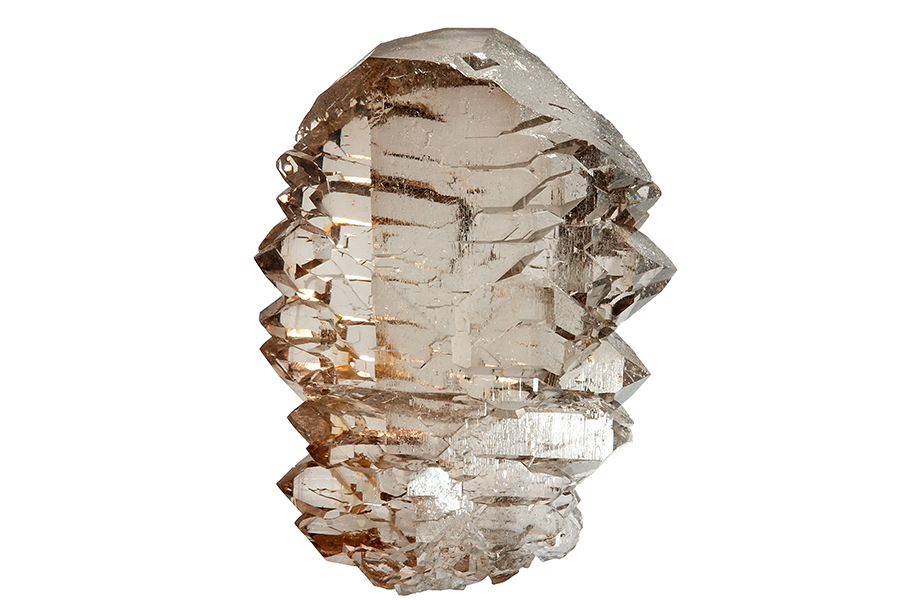
Quartz vrillé dit Gwindel - Collection Musée Alpin de Chamonix Mont-Blanc
In the Mont-Blanc massif, the first specimens were formed 25 million years ago.
The pressure produced by the movement of the African and European plates formed cavities in the rock where water infiltrated which, under high pressure and high temperatures dissolved the silicon in the granite. It was after the temperatures and pressure dropped that the water crystallized, forming these coveted rock crystal specimens.
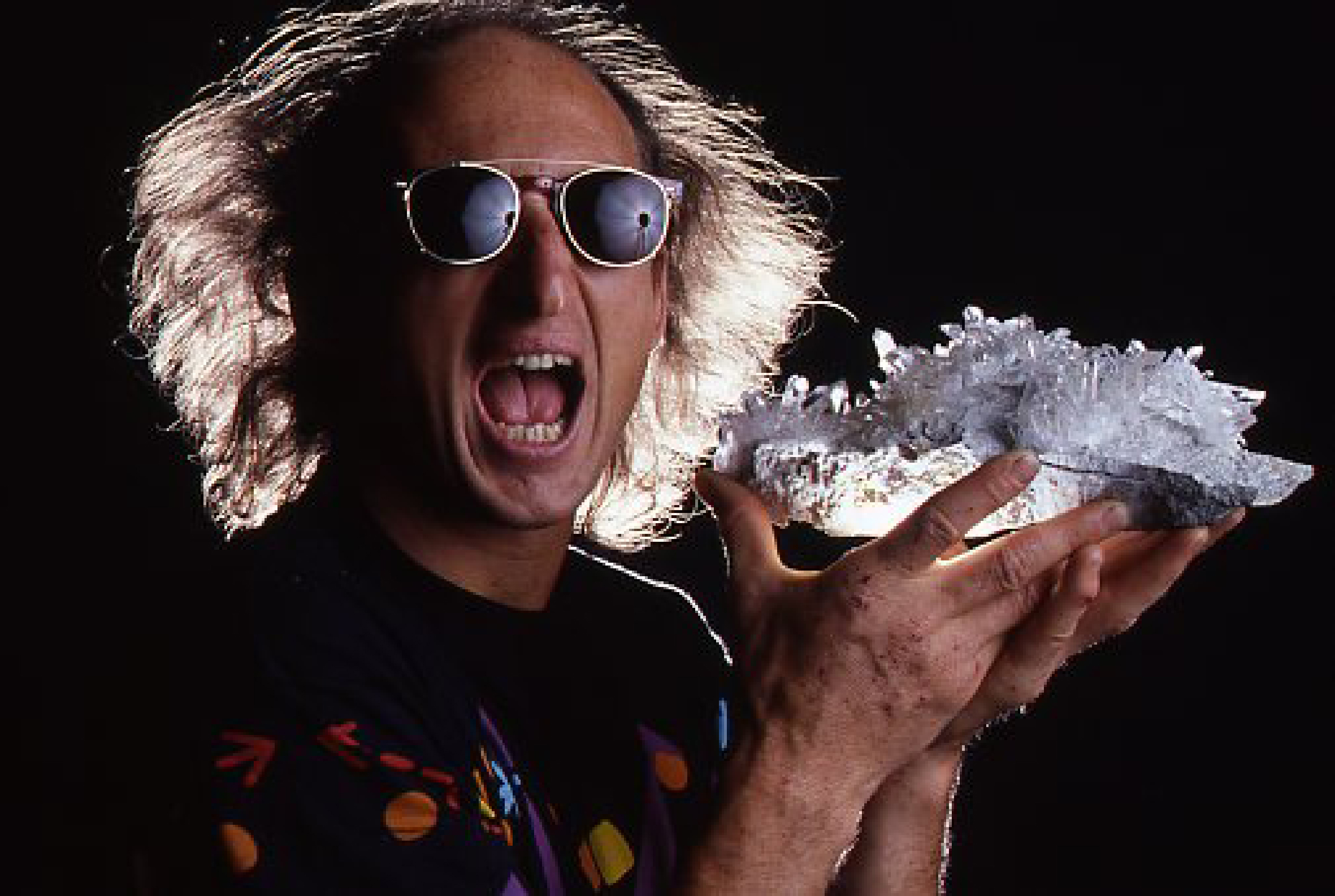
Between 5 and 25 million years old depending on the crystals, these marvels come in a wide variety of colours. Fluorite can be more or less pink or red, quartz, the most common mineral in the massif, can be white, or increasingly dark (smoky), to totally black (the rare quartz morion).
Beside the hexagonal prism surmounted by a point, which is the most famous form of crystal, a wide variety of shapes and sizes exist. Rare pieces are of great value and are highly sought after by collectors.
Fluorine rose - Massif du Mont-Blanc
The search for crystals is a very ancient practice that probably dates back to Antiquity, but is mostly documented from the 17th century. The inhabitants of "Chamoni" traded their finds with amateurs of the time. They thus exploited the few riches to be found in this hostile territory of high mountains.
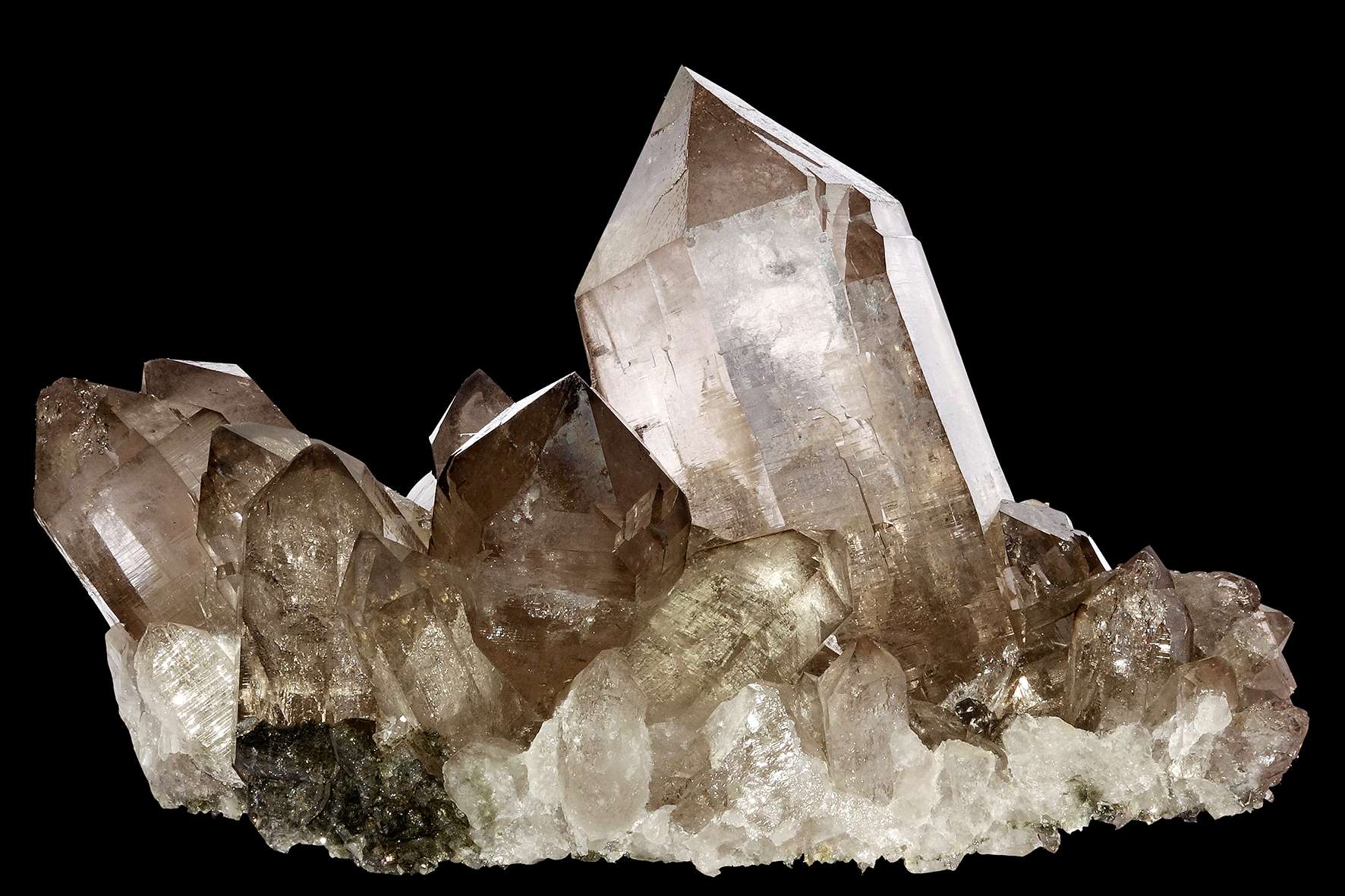
Exportaion of crystals was an important part of Geneva's trade: we know that rock crystals were sought after for the jewelry of those times. It was embedded in buttons, snuff boxes, sword guards, shoe buckles and garters. It is very likely that the quartz sold in Geneva came from the Mont-Blanc range, much closer than the mountais of the Valais and the Oberland. The crystal trade was widespread.
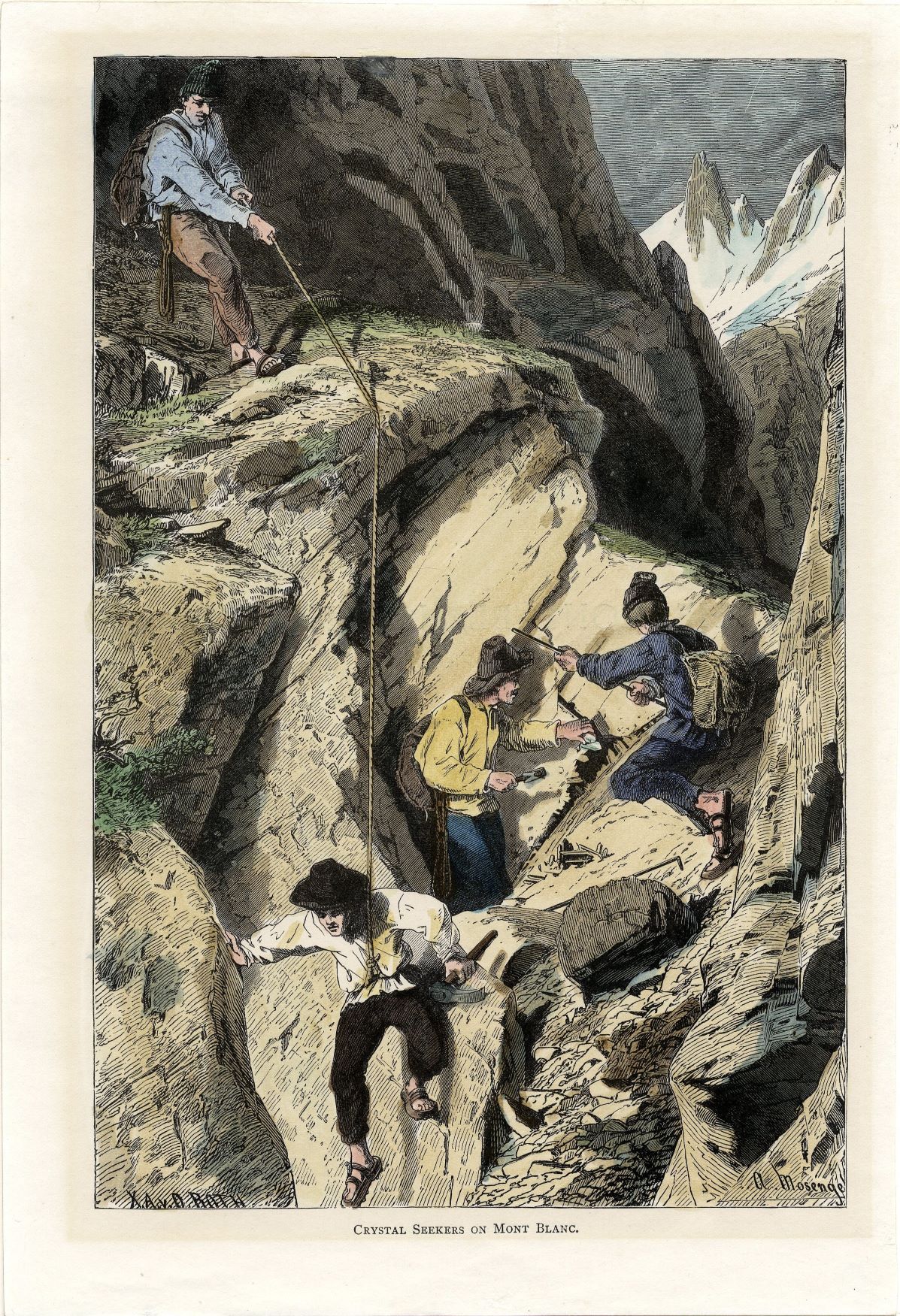
Estampe, 1872, auteurs: Mosengel / Roth Collection musée alpin, Chamonix-Mont-Blanc
We know that the Englishmen William Windham and Richard Pococke came to Chamonix in 1741 to "see the crystals":
“The crystal seekers go down to the foot of the rock faces in August and strike the rock with pick-axes. If the rock resonates, as if it were hollow, they set to work and open the rock: they find caves full of crystallizations. We would have liked to go, but the season was not advanced enough; the snows had not yet melted. "(Windham)
From the 1800s, with the influx of tourists to Chamonix, and particularly the English, the activity of crystal sales was flourishing and naturalist shops opened in the village to sell to visitors. This activity continued in Chamonix until the mid-twentieth century, when it dwindled and almost disappeared.
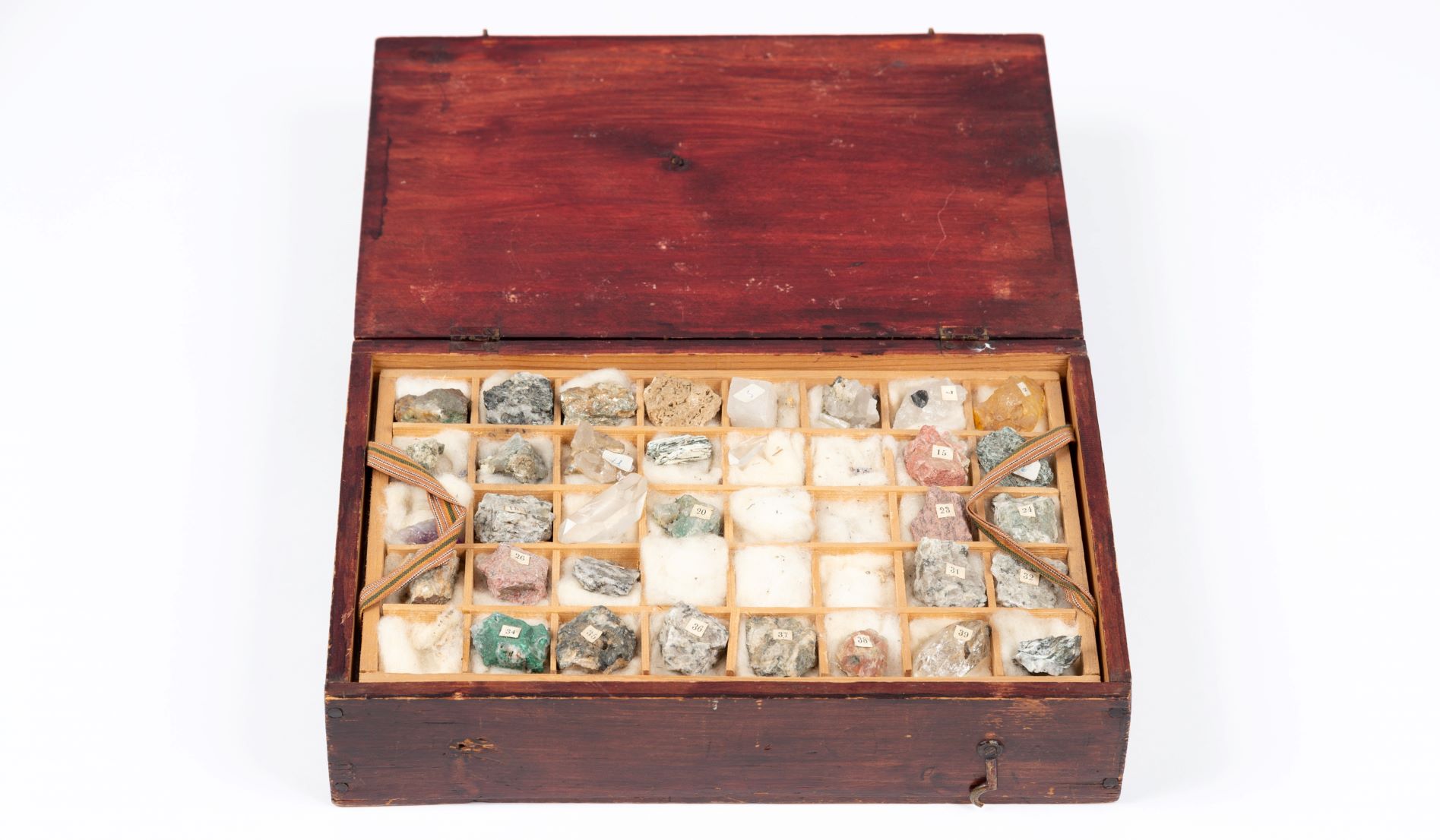
Coffret de minéraux - Joseph-Marie CARRIER (daté entre 1814-34) Collection Musée Alpin, Chamonix-Mont-Blanc
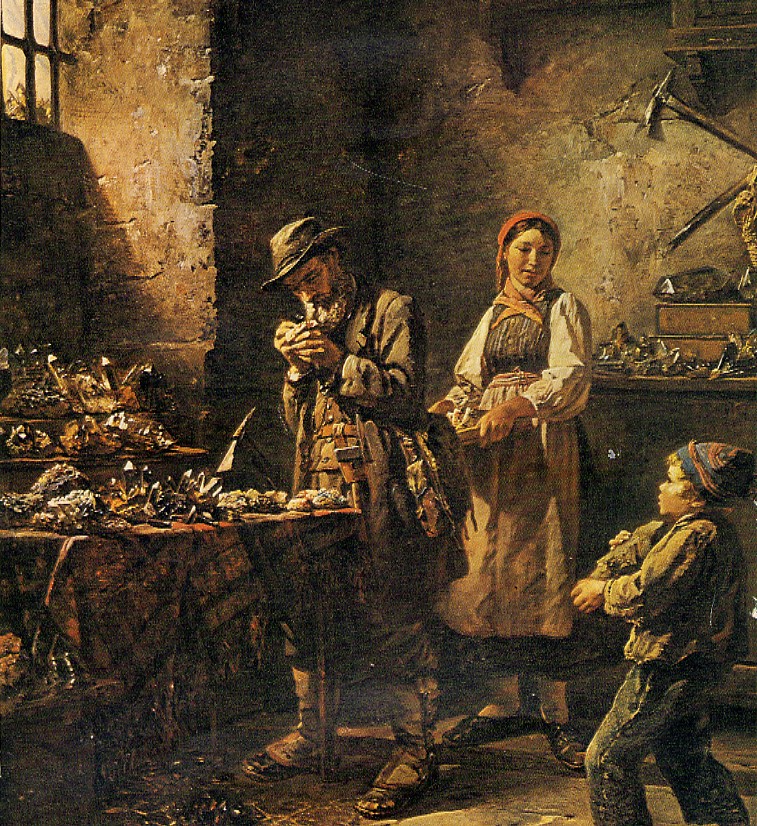
Painting by Swiss artiste Raphaël Ritz (1829-1894)
Between 1960-1970 a few young guides and mountaineers relaunched the search for crystals in the Mont-Blanc massif. Roger Fournier, Jean-Paul Charlet, Armand Comte and a few others take up the torch, this time using all the new mountaineering techniques. This period also corresponds with the creation of mineralogy clubs in France and elsewhere and the organisation of mineral trading exchanges. Henceforth, several generations of guides and mountaineers pursue this passion. In the Mont-Blanc massif one is often a crystal hunter from father to son .
“It’s a quest for the Grail. A treasure hunt during which we all dream of discovering a pink fluorite ” admits the mayor of Chamonix Éric Fournier, introduced to this passion by his father, Roger Fournier.
While each has their own prospecting techniques, all have in common an excellent knowledge of the mountain. It is not uncommon for crystal hunters to be high mountain guides who one day stumble by chance upon a "four" lined with crystals.
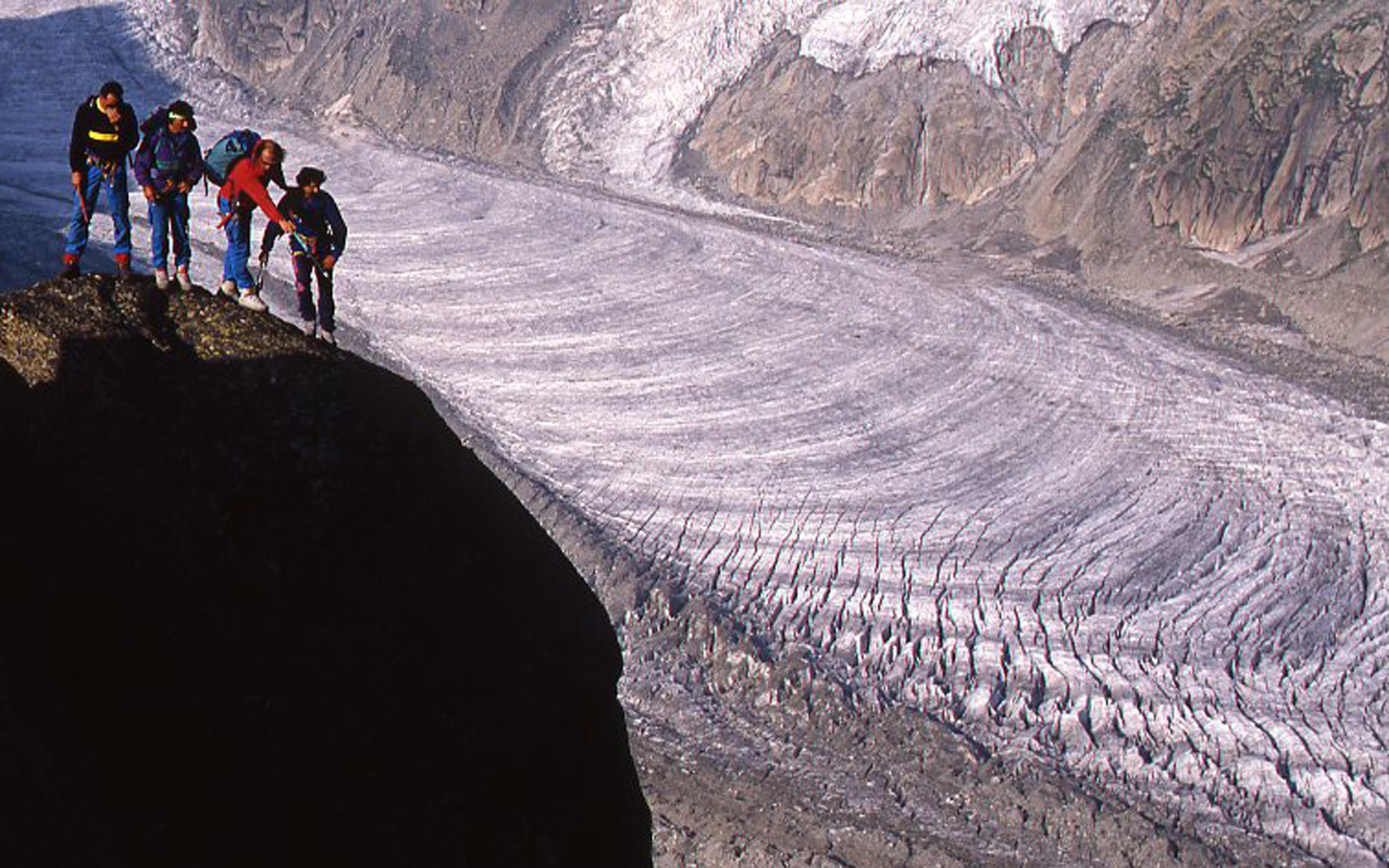
View over the Mer de Glace
"Four" is French for oven, but in this context, the word refers to natural cavities or pockets in the mountainside. These natural cavities, located in or near quartz veins, are generally narrow and quite deep. Access is not easy and their dimensions make collecting crystals very difficult (a large pocket can be 5 to 6 meters long and only a few decimeters wide and high).
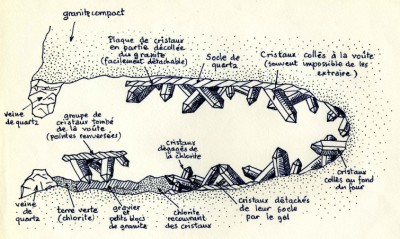
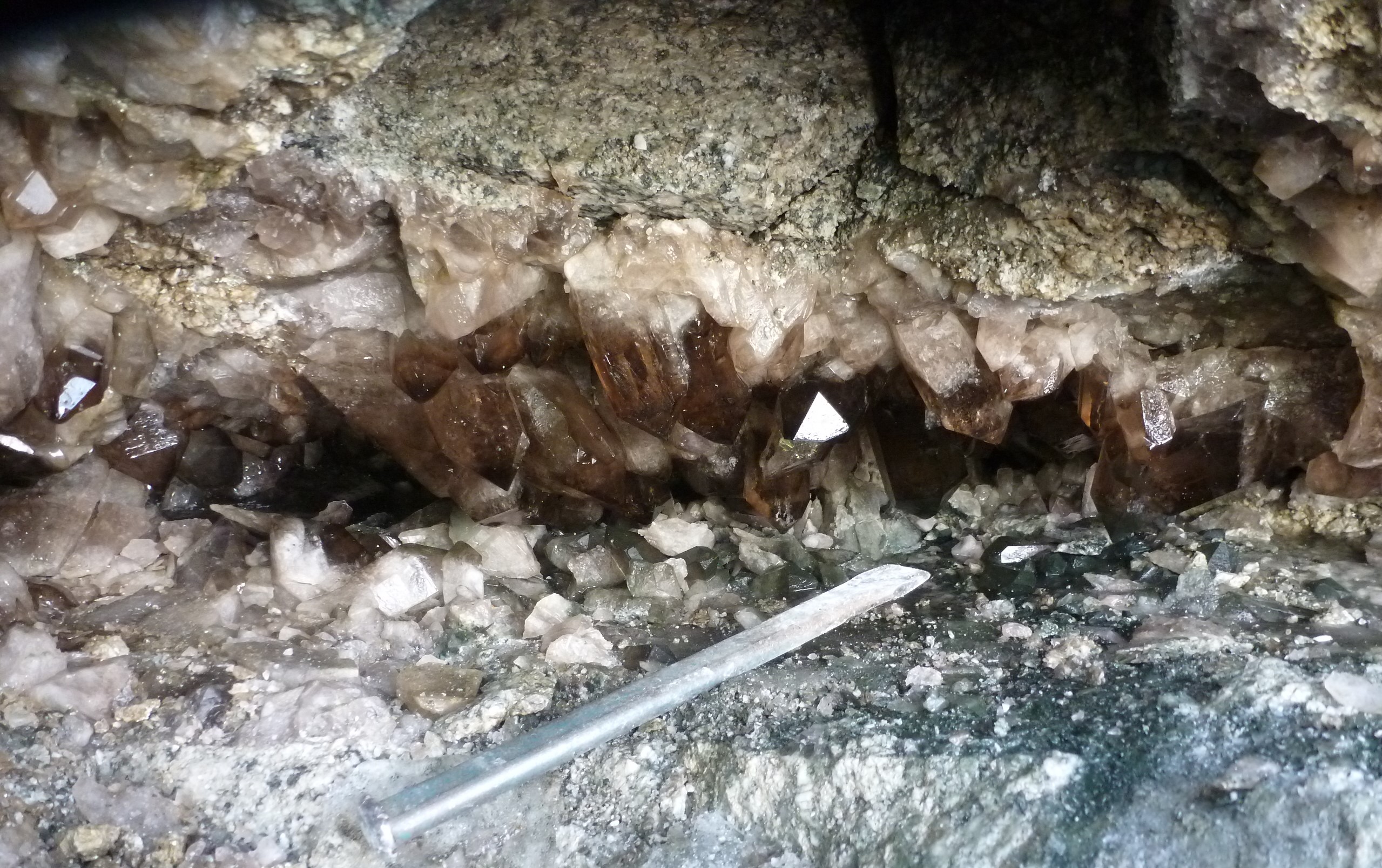
Crystals are most often found where there are crevices, where the mountain is crumbling and rockfall is common. The danger is exacerbated today by global warming as the thawing permafrost weakens rock cliffs and accentuates the danger of rock falls. Risks that crystal hunters like Christophe Perray are ready to take, happy to spend several nights camping out in the heart of the mountains.
"We are like vagabonds or kids in search of hidden treasures" laughs Christophe Perray, a retired ethnologist, resident of Vallorcine in the Chamonix Valley.
The code of honor of crystal hunters
By a ministerial circular published 1996, the use by crystal hunters of explosives, machines and helicopters was to be strictly prohibited. Michel Barnier, then government minister for the Environment, ruled that the prospecting and collection of minerals was henceforth only authorised by traditional techniques.
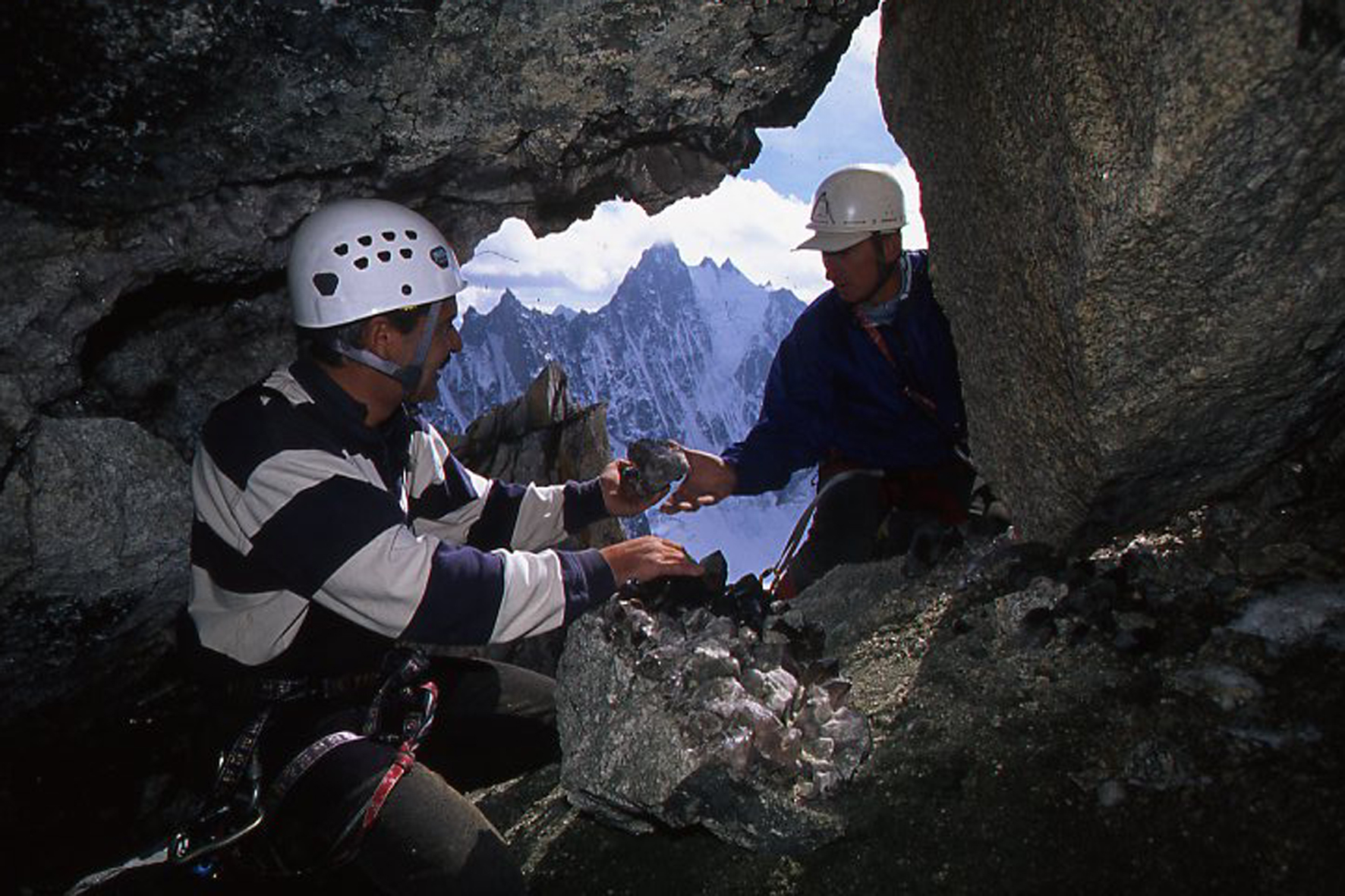
In 2008, the municipality of Chamonix, landowner of the base and the summit of the Mont-Blanc massif, published a decree establishing a code of honour for crystal hunters. In addition to reiterating the obligations formulated by governement decision, this decree, in association with the Chamonix Mineralogy Club, outlines a certain number of obligations.
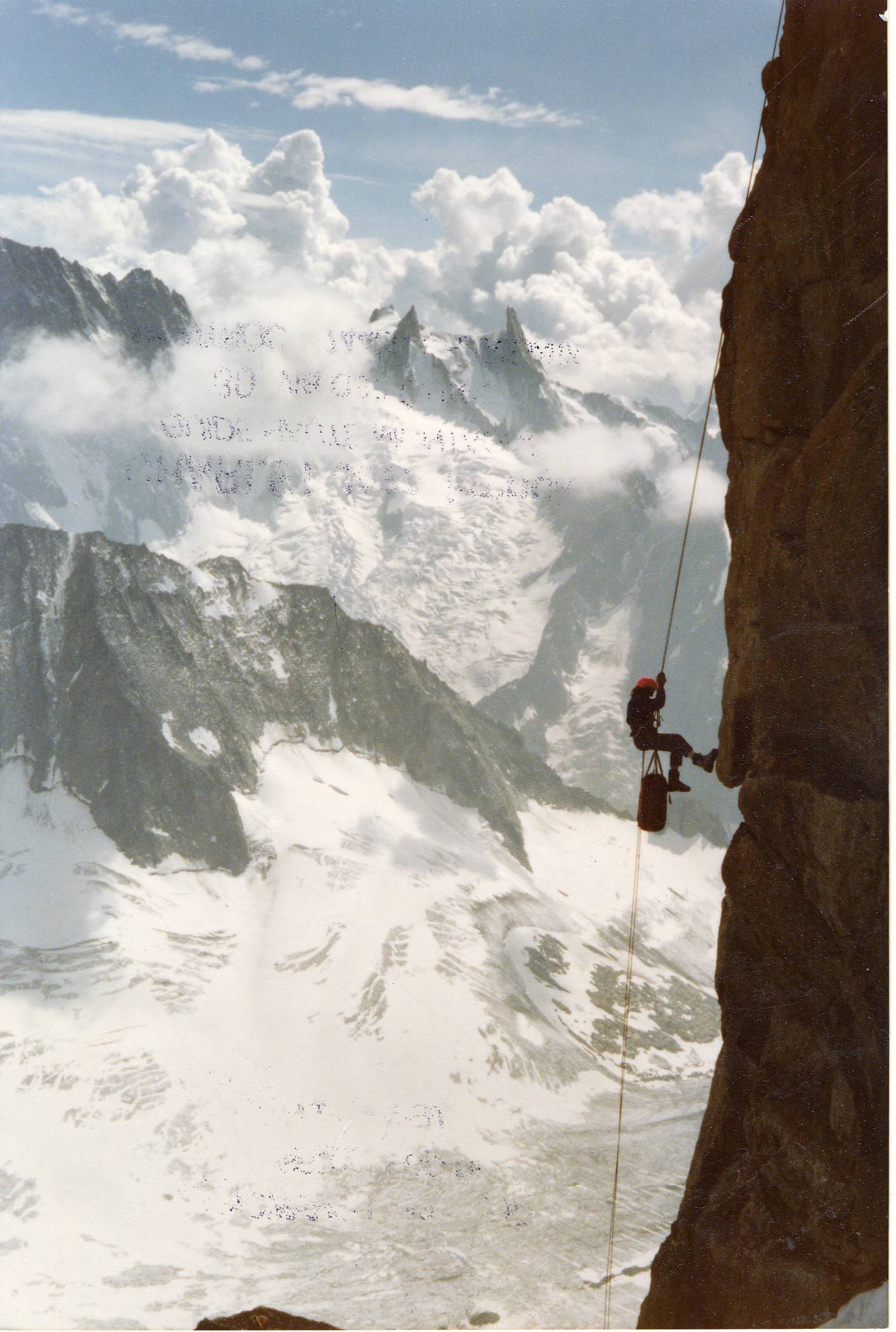
In 2009, the municipality of Chamonix issued an order whereby crystal hunters must give first refusal of their finds to the town's museum.
The genesis of the Museum project
After twenty years of reflection, in 2004 the town hall and the Chamonix mineralogy club signed an initial agreement to conjointly manage an exhibition of their crystal ressources. By this decision they were to bring together the municipal collections, the collections of the mineralogy club and various loans from private collectors. The first crystal museum opened at Espace Tairraz in 2005.
In 2018, following two exceptional donations, the Town Hall of Chamonix-Mont-Blanc and the Community of Communes of the Chamonix Valley made the decision to expand the museum space : Claude-Julien Ducarre donated his collection of 325 specimens to the Chamonix mineralogy club. Michel Jouty bequested his collection of 1,255 specimens to the Town Hall of Chamonix-Mont-Blanc, along with a considerable sum to help finance the new museum space.
To find out more about all the collections, deposits and loans, you can consult the Musée des Cristaux press kit.